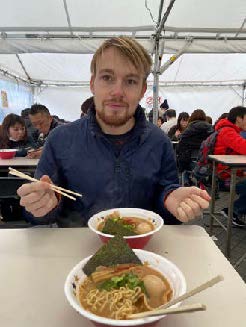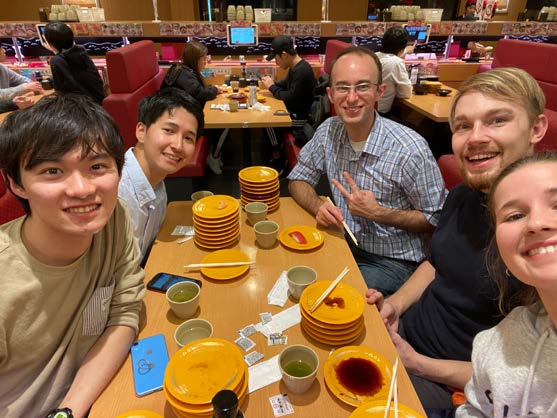Clinical Exchange in Japan
Welcome to Japan and Nagoya University school of Medicine!
Experience report
Name: Karl-Omar Hassan
School: Lund University, Sweden
Study Period: 20.01.20 to 21.02.20
Departments: Anesthesiology
I spent four weeks in the Anesthesiology department. I had the opportunity to influence my schedule and chose to spend three weeks in the OR and one week in the ICU. I was warmly welcomed by all the anesthesiologists and especially Dr Nishiwaki and Dr Akane who helped schedule my stay there. Megumi in the office of international affairs helped greatly with arranging our clerkship in Nagoya.
Even though all the specialists and residents were welcoming, conversation was often difficult because of the language. I do not speak Japanese and many of the doctors I met only spoke a little English. I had of course expected that most of daily work would be in Japanese but I was surprised that also names of medications and settings on machines such as ventilators were written in Japanese signs. Therefore, it was sometimes hard to follow what was happening in the OR.
My expectations on this clerkship were to be able to participate in the practical work of anesthesia during my time in Nagoya. In Sweden, a last year student such as me can do things like put venous lines, ventilate with mask, draw arterial blood, prepare medications and perform intubations while guided by a specialist. I had hoped to be able to practice these things during my clerkship but I only had the opportunity to do a few of them and only a handful of times.
However, in the OR I got to see a wide variety of anesthesiological procedures. It was interesting to see the many different peripheral nerve blocks used as well as various approaches to general anesthesia.
Additionally, I also learned a lot about different fields of surgery. In Nagoya Hospital, almost all the operating rooms had movable cameras that captured the surgeons work in high quality and showed it on several big screens. This was meant for the surgical students but fortuitously I also had the chance to observe what the surgeons were doing. The operating specialists often held a 5-10 minute “mini-lecture” for their students after the surgery was complete and during this time they would gladly explain briefly in English and answer any questions I might have had.
Overall, the OR was rewarding but I would have loved to be able to do more practical work which would have made it into a better learning experience for me.
My week in the ICU was not as good since the normal day in the ward revolved around rounds which were entirely in Japanese. Besides listening at rounds there was not much for me to do. Though the doctors who worked there told me I was there during what happened to be an especially quiet week.
One thing that was not very good with my clerkship was the accommodation. I travelled together with my girlfriend who did a clerkship in OB/Gyn and we both stayed at the Yamate South dormitories for international students. This residency doesn’t allow opposite gender students to visit neither the kitchen nor the rooms of the other sex. This meant we couldn’t cook or eat together except if we carried our plates two floors downstairs to a small unheated class room which they had misleadingly named “the lounge”. This, together with the fact that they charged us for 1,5 months even though we stayed only 4 weeks, made us discontent with Yamate.
When it comes to the great things during my time in Nagoya I especially enjoyed having dinners and lunches with both friendly medical students from Nagoya and other international students we met at the hospital. Me and my girlfriend also made full use of the weekends with short trips to Osaka, Kyoto and Gifu prefecture. During the afternoons, we explored the lively districts Osu and Sakae in Nagoya.
I had a very good time in Nagoya and I am thankful for this clerkship!


Click here to read other stories
Nagoya University Graduate School of Medicine